
Search
The Renewable Energy site for Do-It-Yourselfers
Sizing A Solar Water Heating System to Produce an 80% Solar Fraction
|
This page shows the system size for a solar water heating system that will produce 80% of your water from solar energy for various US climates. That is, it tells you how much collector area is needed for a system that will satisfy 80% of your hot water demand from solar.
An 80% solar fraction means that 80% of the year round energy used to heat your water comes from the sun.

The graphs below show the collector size, energy savings, cost savings, payback period, rate of return, and CO2 emissions reduction for a system that achieves an 80% solar fraction in your climate.
Back to main solar water heating system sizing page ...
|
|
How to Use the Graphs
For the graphs below, the following important assumptions are made:
- The daily hot water demand is 48 gallons (typical family of 3)
- The backup water heater is a standard water heater using electricity at 12 cents per KWH.
- The collector is tilted at an angle equal to the cities latitude and faces south.
- The storage tank size is 2.5 gallons for each sqft of collector.
- These are Do-It-Yourself systems, the costs are for materials only with no labor costs.
- The system design assumed is a drain back system like this one, but without the space heating components.
If these assmptions do not match your situation, you can adjust for your situation...
To use the graphs, pick the city that is nearest to your climate and read off the Collector Area, Energy Delivered Per Year, Cost Saving Per Year, Payback Period, Rate of Return, and CO2 Reduction Per Year from the appropriate graph.
For Example:
If you live in Denver, to achieve a system with 80% solar fraction you will need about 40 sqft of collector area, and the system will save about 2.3 megawatt-hours of energy per year which is worth about $275 and will save about 2.5 tonnes in CO2 emissions per year. The payback period on your invesiment is just under 3 years and the rate of return is 37%.
Again, these numbers assume that you plan and build the system yourself so that the only costs are for materials. If your hot water demand is other than 48 gallons per day, then you will have to adjust for your situation...
Collector Area:
Shows the collector area in sq-ft that is required for each city to achieve an 80% solar fraction.
An 80% solar fraction means that 80% of the energy used to heat your water comes from the sun.
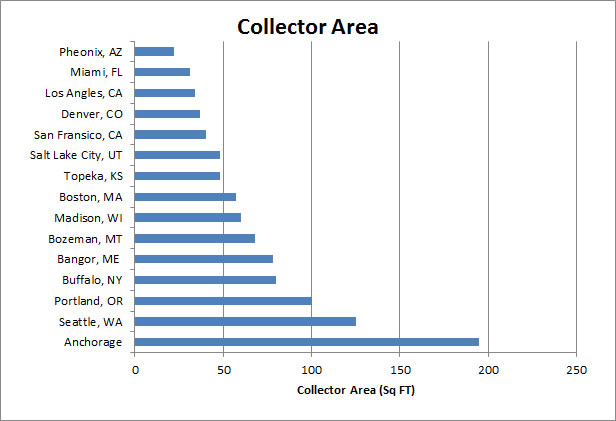
Bottom line is, if you want a system that delivers an about 80% solar fraction, use a collector size from the graph above for a city near you.
Note that for climates that show quite high collector areas (eg Anchorage) it would probably make more sense to back off a bit on the 80% solar fraction and reduce the collector size somewhat. To determine how much to back off, see this page...
Solar Fraction:
Shows the solar fraction achieved in each city for the collector area shown above.
The collector areas above were chosen to produce an 80% solar fraction in each city, so all come in at 80%.
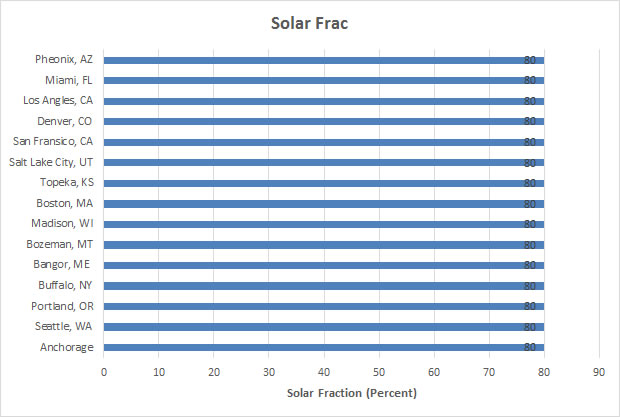
Energy Delivered Per Year:
Shows the amount of energy delivered by the system per year of operation in millions of watt-hours.
For energy in KWH, multiply by 1000.
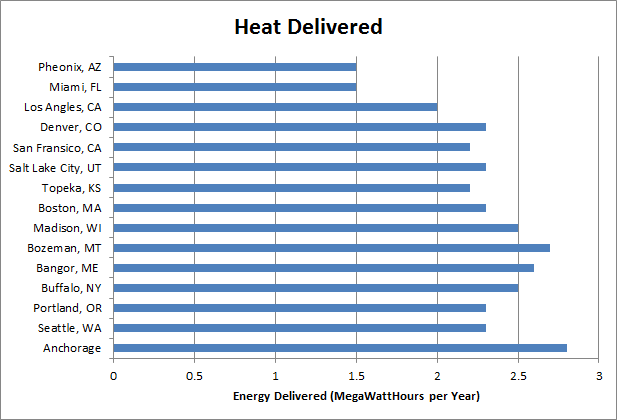
Since all of these systems are set up to provide an 80% solar fraction, the differences in heat delivered is simply a function of the ground water temperature for each city. Lower ground water temperatures mean more energy is required to heat the water up to 120F. So, the energy savings are greater in areas with low ground water temperatures.
Cost Saving Per Year:
Shows the cost saving in energy per year the solar water heater compared to a standard electric water heater with $0.12 per KWH electricity.
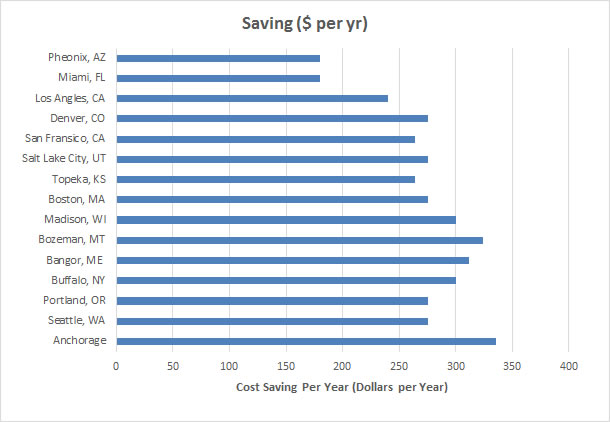
Payback Period:
Shows the simple payback period in years for the system.
This is the number of years it takes for the savings in energy cost to payback the initial cost of the materials used to build the system.
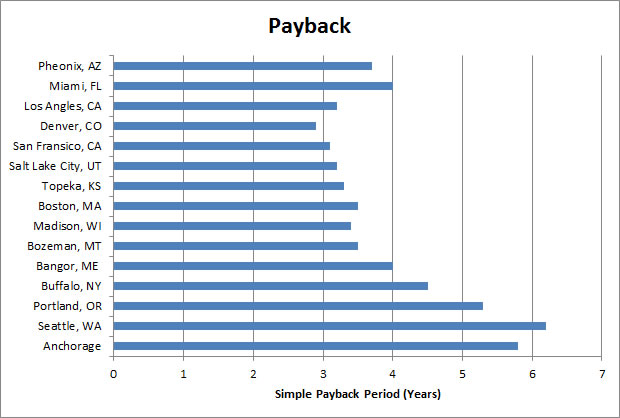
Rate of Return:
Shows the Internal Rate of Return for the solar water heater.
This is essentially the return you are earning on the money you invested up front to buy materials.
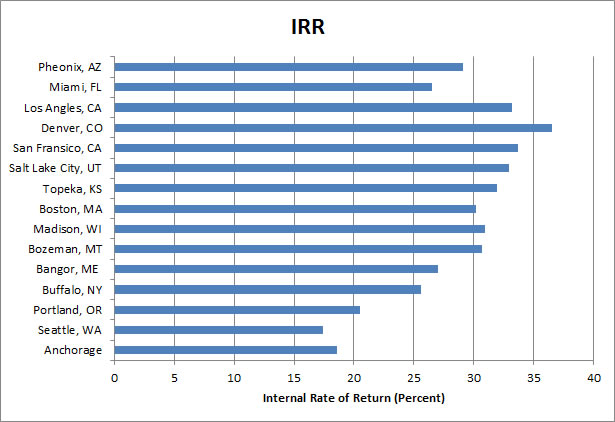
CO2 Reduction:
Shows the reduction in CO2 emissions compared to heating with a standard electric hot water tank in tonnes.
A tonne is 1000 kg or 2200 lbs.

Gary
December 15, 2015, July 7, 2016







